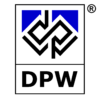Micronized Whiting Chalk Powder: An Economical Alternative in Paint Manufacturing
In the world of paint manufacturing, the quest for cost-effective yet high-performing raw materials is continuous. One such material gaining attention is Micronized Whiting Chalk Powder (MWCP). Despite not matching the superior whiteness and brightness of titanium dioxide (TiO2), MWCP presents a viable alternative to reduce TiO2 usage in paint formulations. This adjustment offers substantial economic benefits without significantly compromising the quality of the end product.
* What is Micronized Whiting Chalk Powder?
Micronized Whiting Chalk Powder is a finely ground form of natural calcium carbonate. Its primary use has traditionally been in the production of paints, plastics, and other coatings. The term “micronized” indicates that the chalk powder has been processed to achieve extremely fine particle sizes, enhancing its ability to blend seamlessly into various formulations.
* Cost-Effectiveness of MWCP
One of the standout advantages of MWCP is its cost. The landing cost of MWCP ranges between ₹5 to ₹10 per kilogram, depending on the location across the country. This makes it significantly cheaper than TiO2, a pigment that often sees much higher prices due to its superior properties and the complexity involved in its production.
* Reducing TiO2 Usage with MWCP
TiO2 is renowned for its exceptional opacity, brightness, and whiteness, making it a preferred choice in paint manufacturing. However, its high cost can be a limiting factor. By incorporating MWCP, manufacturers can reduce the percentage of TiO2 needed in their formulations. This substitution does not drastically affect the paint’s performance, especially in terms of covering power and surface finish.
The key lies in the complementary nature of the two components: while TiO2 provides the necessary whiteness and opacity, MWCP can fill out the volume, thereby reducing the overall requirement of the more expensive TiO2. This strategy effectively lowers production costs, making the paint more affordable for consumers while maintaining an acceptable quality standard.
* Source and Availability
The uniqueness of MWCP is underscored by its geographical source. Porbandar, a coastal city in the Indian state of Gujarat, is notable for being the only place in Asia with genuine whiting chalk powder deposits. This region’s rich mineral wealth ensures a steady supply of high-quality MWCP, bolstering its status as a reliable raw material for the paint industry.
* Applications Beyond Paint
While paint manufacturing is a significant application, MWCP is also utilized in various other industries. Its properties make it suitable for use in plastics, rubber, adhesives, sealants, and even in the production of paper and construction materials. The versatility of MWCP ensures its demand across multiple sectors, further highlighting its economic importance.
* Environmental Considerations
In addition to cost benefits, the use of MWCP in place of a portion of TiO2 can have environmental advantages. The extraction and processing of TiO2 are energy-intensive and environmentally taxing. By reducing the dependency on TiO2, manufacturers can lower their environmental footprint, contributing to more sustainable production practices.
* Conclusion
Micronized Whiting Chalk Powder offers a compelling mix of affordability and functionality, making it a practical alternative in paint manufacturing. While it does not rival the brightness and whiteness of TiO2, its ability to reduce the overall cost of paint production without significantly compromising quality is noteworthy. The availability of MWCP from Porbandar, combined with its wide range of applications, positions it as a valuable asset in various industrial processes. As manufacturers continue to seek cost-effective and sustainable solutions, MWCP stands out as a resource worthy of consideration.
